Every bike brand worth its salt has a gravel bike in its range, but there’s a vast array of different spec choices and setup options out there.
Some bikes are geared towards fast rides both on- and off-road, while others are set up to carry luggage on long-haul adventures, well off the beaten track.
There's a wide range of gravel bike geometry to reflect this, with gravel race bikes configured more like road race or fast endurance bikes, while bikepacking bikes will be designed for more relaxed handling when loaded.
Deciding on the best gravel bike for your needs partly depends on your requirements as a rider – where and how you ride – and its specific configuration, from gearing and wheel sizes, to tyre width and finishing kit.
What are the spec options to look out for when buying a bike? And what components can you tweak to adapt your gravel bike so it best suits your type of riding?
Whether you’re on the lookout for a new gravel bike, or you’re looking for the top gravel bike upgrades, we’ve demystified the intricacies of gravel bike setup to help you make the right decision.
You can use the links below to jump to the section you need – or read on for our ultimate guide to gravel bike setup.
- Groupsets
- Gearing
- Pedals
- Wheel sizes
- Tyre choice
- Tyre pressure
- Finishing kit
- Dropper posts
- Suspension
- Accessories
Gravel bike groupsets

Acknowledging the surge in popularity of gravel riding, each of the major groupset manufacturers has released gravel-specific groupsets over the past few years: Shimano GRX, Campagnolo Ekar and SRAM XPLR.
All three share wider gear ranges than equivalent road bike groupsets. The numbers of gears, or ‘speeds’ on the cassette, they offer overlaps and differs. Shimano GRX has options for 10-speed, 11-speed and 12-speed setups, SRAM XPLR uses a 12-speed cassette, while Campagnolo Ekar pushes on further to 13 sprockets.
Besides gearing, these gravel groupsets have been designed to contend with the increased braking demands of gravel riding. Shimano’s GRX brakes take Servo Wave tech from the company’s mountain bike groupsets to increase braking power and modulation for steeper, more technical descents.
As with road and MTB drivetrains, you can choose between mechanical or electronic groupsets with Shimano and SRAM options. Campagnolo Ekar is mechanical only.
Gravel bike gearing

A few years ago, many gravel bikes came fitted with a 50/34t compact crankset seen commonly on road bikes, along with a fairly narrow-range cassette.
That’s still a fair option if most of your riding is a mix of tarmac and gentle off-road trails, and you’re not expecting to carry a lot of kit.
However, once you hit more loose, steep road and trail surfaces, you’ll need easier gear options to help you keep the pedals turning. Spinning a higher cycling cadence saves your legs too.
How low can you go?
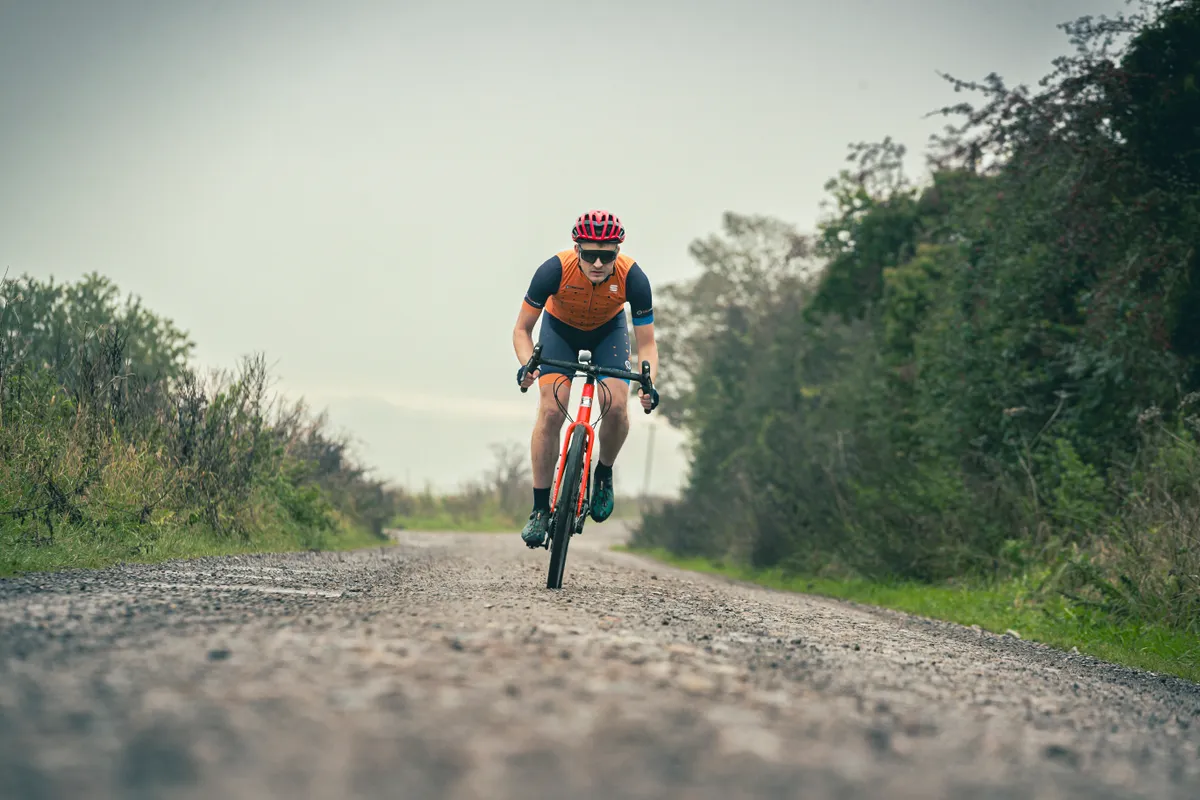
With that in mind, the trend nowadays is towards much lower gearing for gravel bikes.
Many new gravel bikes will have gears that give you the lowest ratios of 1:1 or below. That should enable you to climb steep, loose off-road ascents when unladen, and also gives you more range to load up your gravel bike for multi-day bikepacking trips.
SRAM has a range of 12-speed wireless gearing options designed for off-road riding. Its XPLR groupsets offer gravel-appropriate gearing at the Red, Force, Rival and Apex levels, with a single-chainring drivetrain (see below) matched to a 10-44t cassette (or 11-44 for Apex) and an appropriate rear derailleur.
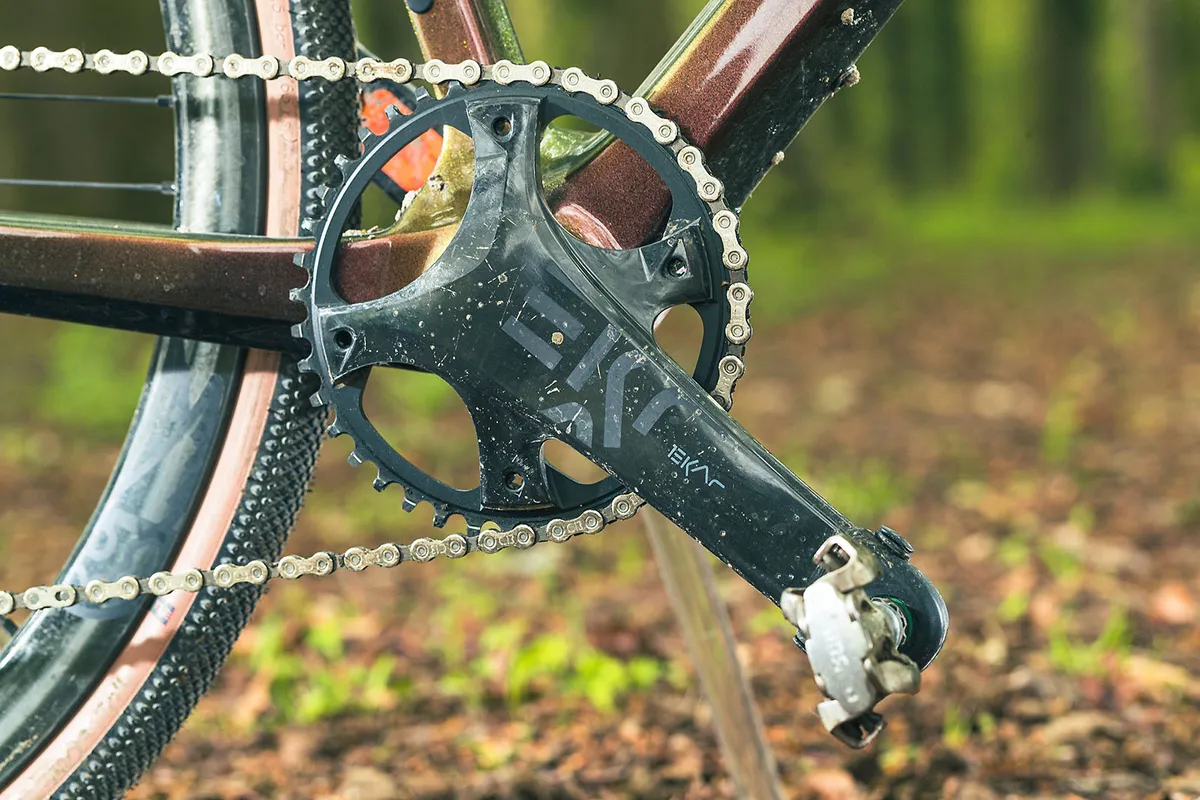
The downside of lower gearing is you may run out of top-end gears if you’re descending on tarmac, though the reality is you’ll normally have plenty of gears for fast riding.
It’s worth considering the type of riding you’re expecting to do when choosing a gravel bike or a new groupset. Be realistic – and honest – about the type of riding you'll be doing, and what gearing you need as a result.
Gravel bike chainring sizes
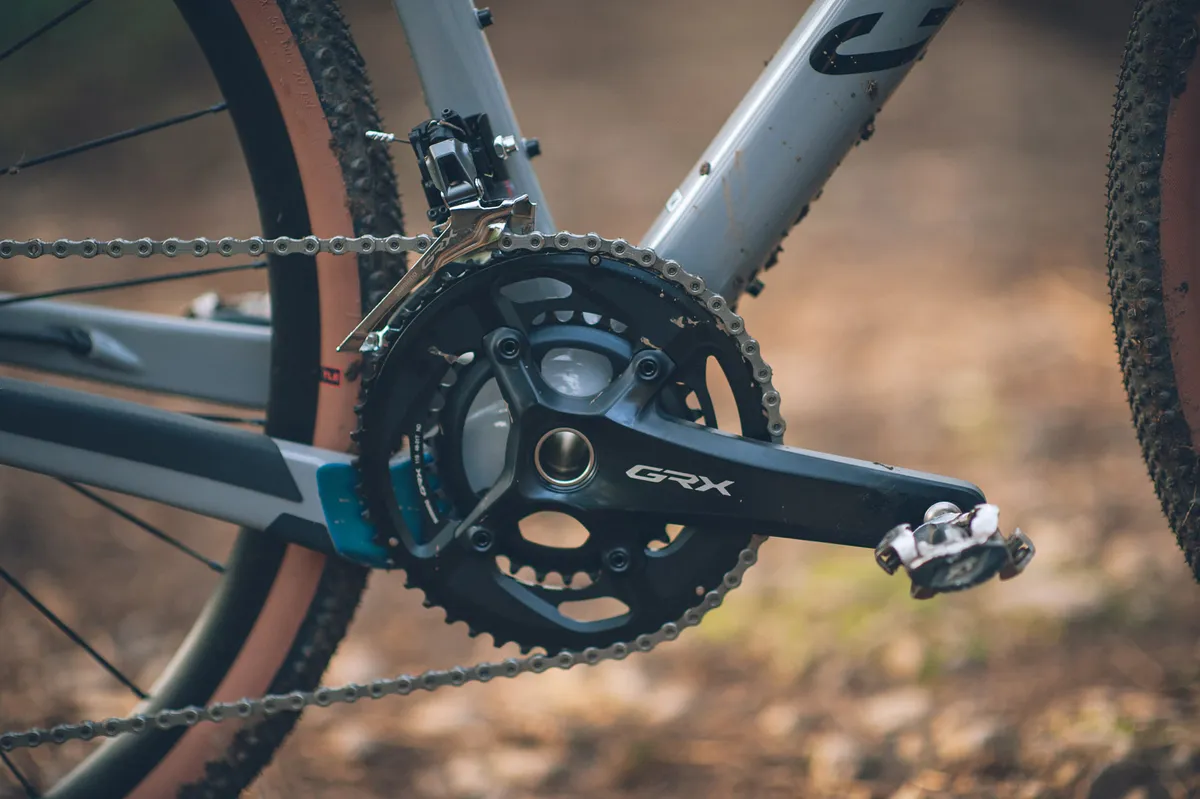
The shift to lower gear ratios is driven by changes at both ends of the drivetrain.
At the front, there’s a trend towards smaller chainrings, with super-compact double cranksets (also known as sub-compact) increasingly specced, where the chainring sizes are smaller than a 50/34t road compact.
These are available in an array of smaller size combos: Shimano’s gravel-specific GRX groupsets give you a choice of 48/31t or 46/30t double cranksets, and a growing number of aftermarket suppliers, including the likes of FSA, Rotor and Praxis, sell gravel cranksets with similar-sized rings.
1x drivetrains are perhaps even more popular than 2x, with SRAM’s XPLR chainrings available from 38-46t and Campagnolo Ekar chainrings ranging from 38-44t. On Ekar GT, there is also the option of a 36t chainring, but you cannot use it on the mainline Ekar chainring because it uses a different bolt circle diameter (BCD).
As well as lower ratios, a smaller chainring means bike designers can more easily add clearance for wider tyres, supporting another trend in gravel bike design.
The SRAM Wide two-ring gravel chainset at Force and Rival levels offers a 43/30t chainset with its chainline shifted 5mm to the right compared to its standard spacing.
This means there's more space around the chainstays for wider tyres and the small rings make for plenty of low-ratio gearing.
Gravel bike cassette options
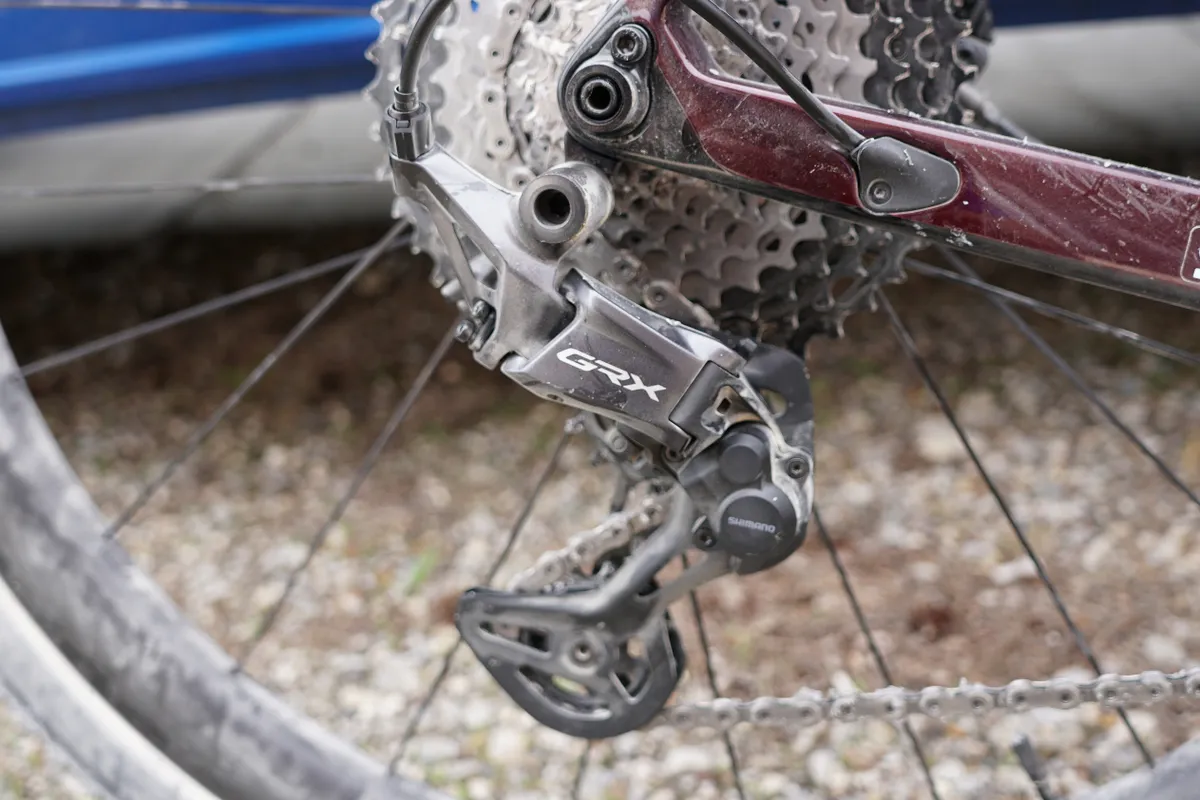
Meanwhile, on the back of the bike, the latest rear derailleurs can handle much larger cassettes, once again ensuring a wider range of gears for off-road riding and bikepacking.
Whereas older rear derailleurs designed for road bikes might just about squeeze in a 30-tooth largest sprocket, many modern road rear derailleurs can handle 34 teeth, giving you a couple of easier gears for climbing. SRAM 12-speed derailleurs can handle a 10-36t cassette with two chainrings.
Swap to a gravel-specific derailleur and you can typically head up to around 42 teeth, although these wide-range derailleurs are designed to work with single-ring groupsets (which we'll come on to), rather than double cranksets.
In terms of top-end speed, Shimano’s 12-speed cassettes start at 11 teeth, but SRAM has options with 10 teeth on the smallest sprocket, and Campagnolo's Ekar groupset goes smaller still with a nine-tooth sprocket.

10-tooth cassettes only fit SRAM’s XDR freehub body, rather than the standard Shimano/SRAM design, and Campagnolo Ekar has its own N3W freehub.
To keep the chain taut over such wide ranges and aid chain retention, gravel-specific rear derailleurs, including Shimano GRX, SRAM XPLR and Campagnolo Ekar, will typically incorporate a clutch.
The clutch is always engaged in Campagnolo and SRAM’s designs, but there’s a lever on Shimano’s GRX (and older Ultegra RX) derailleurs to let you release it when you’re riding on smoother surfaces.
There’s a marginal decrease in drivetrain friction if the clutch is disengaged, but most helpfully it makes removing the rear wheel easier.
1x or 2x?

Taking the lead from the mountain biking world, we’ve seen gravel bike groupsets heading increasingly towards a single-chainring setup, paired with a very wide-range cassette, as opposed to a double crankset. SRAM and Shimano both offer single-ring options, while Campagnolo Ekar is single-ring only.
With a 1x groupset (pronounced 'one-by', as a single-chainring setup is known), you save a little weight by dispensing with the front derailleur, plus there’s less to go wrong and less chance of mud build-up. They are also designed to keep the chain in place and running smoothly when you’re riding over bumpy ground.
On the minus side, there are sometimes fewer gear options covering roughly the same gear range, so jumps between gears are larger.
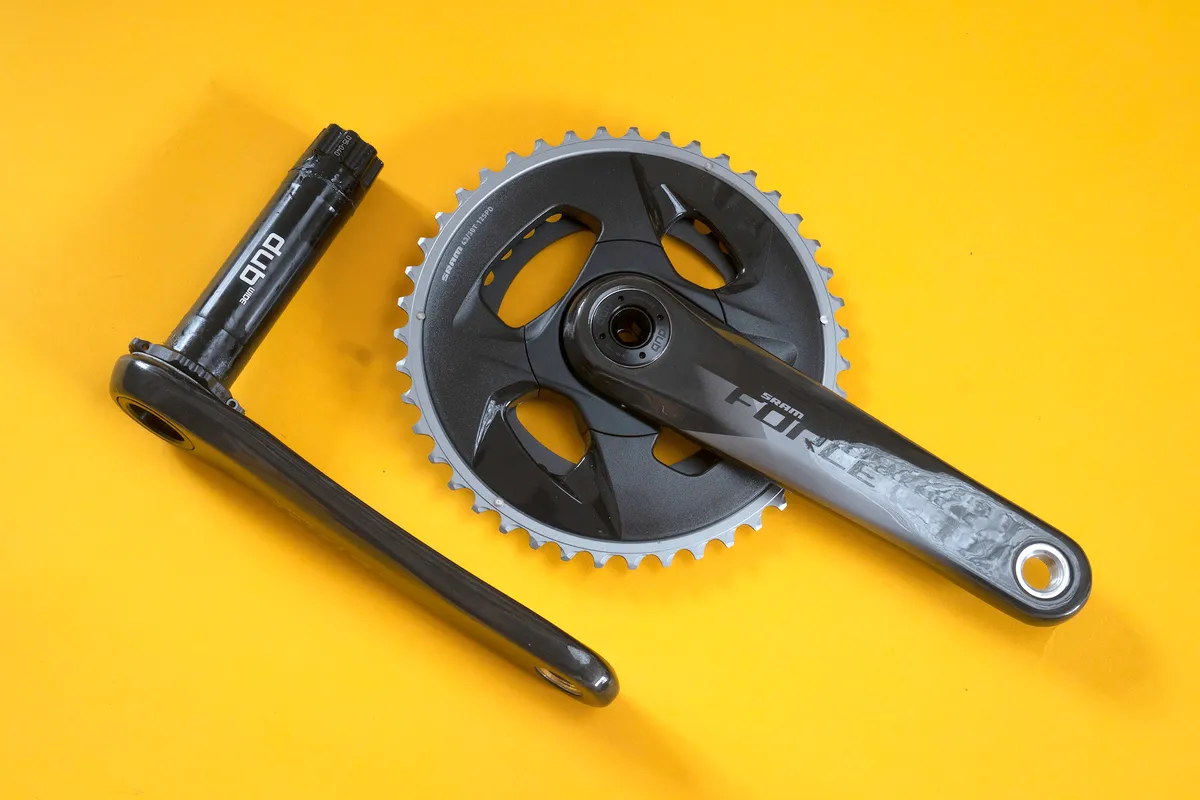
Gravel riders who spend a fair amount of time on the road, or covering ground quickly, might find the extra top-end range of a double crankset useful.
Plus, the additional weight of a larger cassette often negates the weight savings from losing the front derailleur.
That said, once you take account of overlaps in ratios between the large and small chainrings in a two-ring setup, and unusable combinations at the high and low ends of the cassette, the number of unique gears isn’t that different.
Campagnolo has also sought to address this by moving to 13 speeds with Ekar, allowing for a wide-ranging cassette with smaller gaps between sprockets.
A single-ring setup means you can access all gears sequentially too, rather than needing to swap chainrings to access your higher or lower ranges; no more cross-chaining.
Because the chain doesn’t have to jump between rings, single-ring cranksets have deeper teeth on the chainring to help keep the chain in place. Single chainrings usually have alternating wide and narrow teeth to match the different widths of the chain links, again to improve chain retention over uneven surfaces.
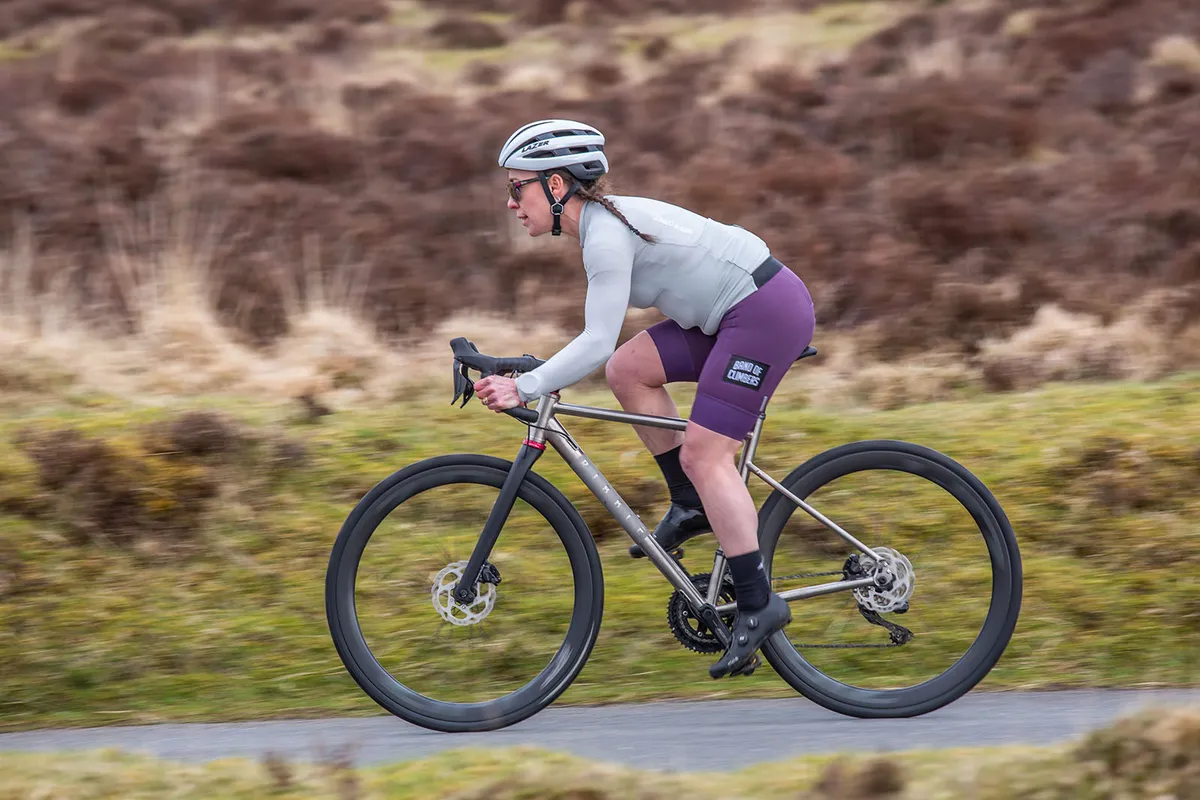
Ultimately, deciding between a single-ring and a double-ring setup depends on the riding you’re planning, and your preferred groupset brand.
If you’re wanting to ride mainly fast on the road and on smoother terrain, a double-ring crankset could give you a few more high-end ratios and smaller jumps between gears.
If you’re looking to tackle harder terrain, you may appreciate the chain retention benefits and simplicity of a single ring.
Mullet gearing

SRAM allows you to mix and match its road and mountain bike components, meaning you can use a super-wide cassette on your gravel bike, as pictured here. Want even lower gears? So-called ‘mullet’ builds mix a road crankset and shifters with a mountain bike rear derailleur and cassette for an ultra-low gear range.
Using Shimano’s electronic Di2 components, you can pair GRX shifters with an XTR or Deore XT Di2 MTB rear derailleur. Both MTB derailleurs can handle an 11-42t cassette in double-chainring configuration, or 11-46t with a single chainring.

It’s an option also promoted by SRAM with its AXS 12-speed wireless electronic components. Here, the AXS Eagle MTB rear derailleur is designed to work with an Eagle 10-52t cassette, giving really low ratios when paired, say, with a 42-tooth chainring.
With the release of SRAM XPLR, we might see fewer of these mullet drivetrains though, because you can now run a 10-44t cassette with a 1x chainring, bridging the gap between MTB Eagle gearing and SRAM Wide.
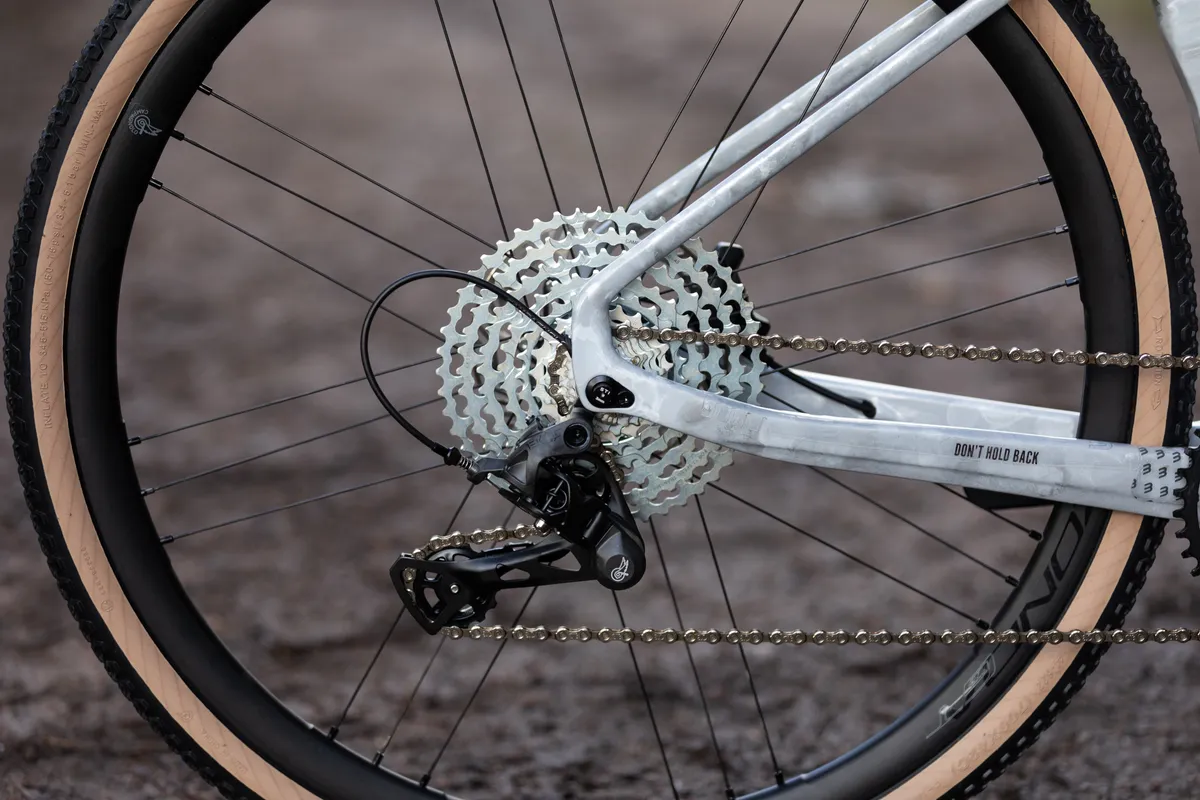
Campagnolo's Ekar GT groupset also bridges the gap between gravel and mountain bike cassettes with its 10-48t cassette. However, note that it is only compatible with the Ekar GT rear derailleur because the Ekar variant's maximum capacity is 44t.
If you’re really into mix-and-match drivetrains, there are a host of brands, such as Wolf Tooth Components and Garbaruk, that make parts to enable you to do pretty much whatever you like. For example, we've covered a custom Cannondale Topstone Lefty gravel racing bike featuring a colossal 50t single chainring and 10-52t cassette from Garbaruk.
Gravel bike pedals

Pedal choice is another area where there are lots of options.
The best gravel bike pedals are usually considered to be SPD-style two-bolt pedals. These have two points of entry for easy clipping in (or four for the Crankbrothers Eggbeater pedals). The recessed cleats and lugged soles of gravel bike shoes make walking with the bike a lot easier than three-bolt cycling shoes.
SPD pedals often have minimalist skeleton designs. This helps with mud shedding, but results in a small contact area between your pedals and your shoes. Depending on how stiff your shoes are, this can sometimes be felt through the sole and may reduce pedalling efficiency.
So, a pedal with a platform can also be a good option because it adds to the contact area between the pedal and the foot. It also makes pedalling unclipped easier, if you're riding tricky terrain or trying to restart on a steep climb.

Having said that, some gravel racing professionals will use three-bolt road bike pedals because they rarely dismount.
The other alternative is flat pedals. As with mountain bike riders, some gravel riders prefer these for the ability to remount quickly, change their position easily and dab a foot in a turn or a skid.
Gravel bike wheel size
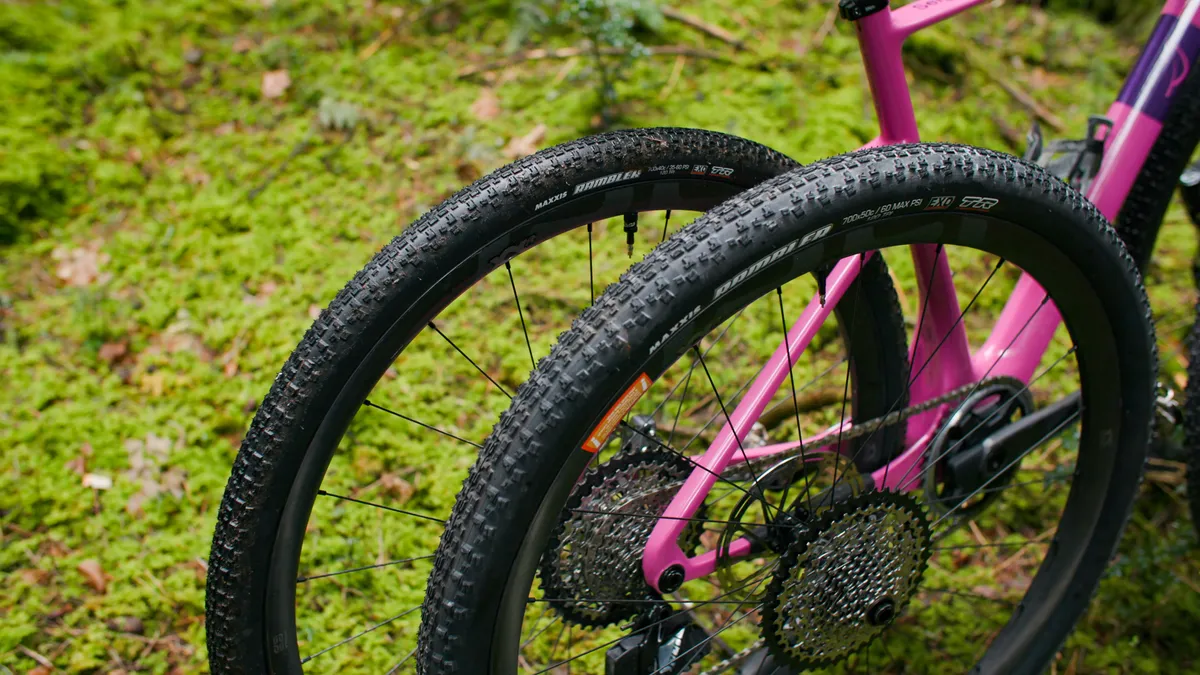
Over the last few years, many brands have developed their own designs for gravel wheels too.
The usual 700c road wheels continue to be popular, but there’s an increasing range of gravel bike wheels, which typically have a wider internal rim width than a road-going wheel to provide better support for wider gravel tyres.
Road rims are following fast in their wake and also getting wider, mirroring the trend for wider road bike tyres.
Gravel bikes are invariably designed with disc brakes, and rims are almost always tubeless-ready, except for some cases where tight budgets mean non-tubeless compatible wheels are specced. The puncture protection afforded by the sealant in a tubeless tyre is a godsend when riding over broken surfaces and thorny debris.
Many gravel wheels are supplied as ‘tubeless ready’, which means they’re already fitted with tubeless rim tape and supplied with tubeless valves.
Hookless rims, where there is no lip to the rim edge, are increasingly common. Hookless rims have been popular in mountain biking for some time, and are gaining prominence on the road and in the gravel scene too.

Alongside 700c wheels, they offer compatibility to fit 650b wheelsets. The smaller wheel size – equivalent to 27.5in mountain bike wheels – enables you to fit even wider tyres in your frame, with greater volume.
That can add comfort to the ride, as well as increasing grip on off-road terrain and enabling you to run even lower tyre pressures. With a large tyre, the rolling circumference of a 650b wheel is similar to a 700c with a narrow tyre, so gearing and handling should end up similar.
Rather like the single/double crankset choice above, the 700c vs 650b wheels debate for gravel depends on your objectives and what you want from your bike.
Historically, for a faster ride on the road, and on light gravel, 700c wheels with narrower tyres of around 40mm or less would have been the go-to option, with 650b wheels and wider tyres preferred for more difficult, off-road terrain thanks to the ability to run plumper rubber.
However, many of the latest gravel bikes offer increasingly generous clearance, even with 700c wheels, so switching to the smaller 650b wheel size may not be necessary if you do want to size up when it comes to tyres.
Gravel bike tyre choice
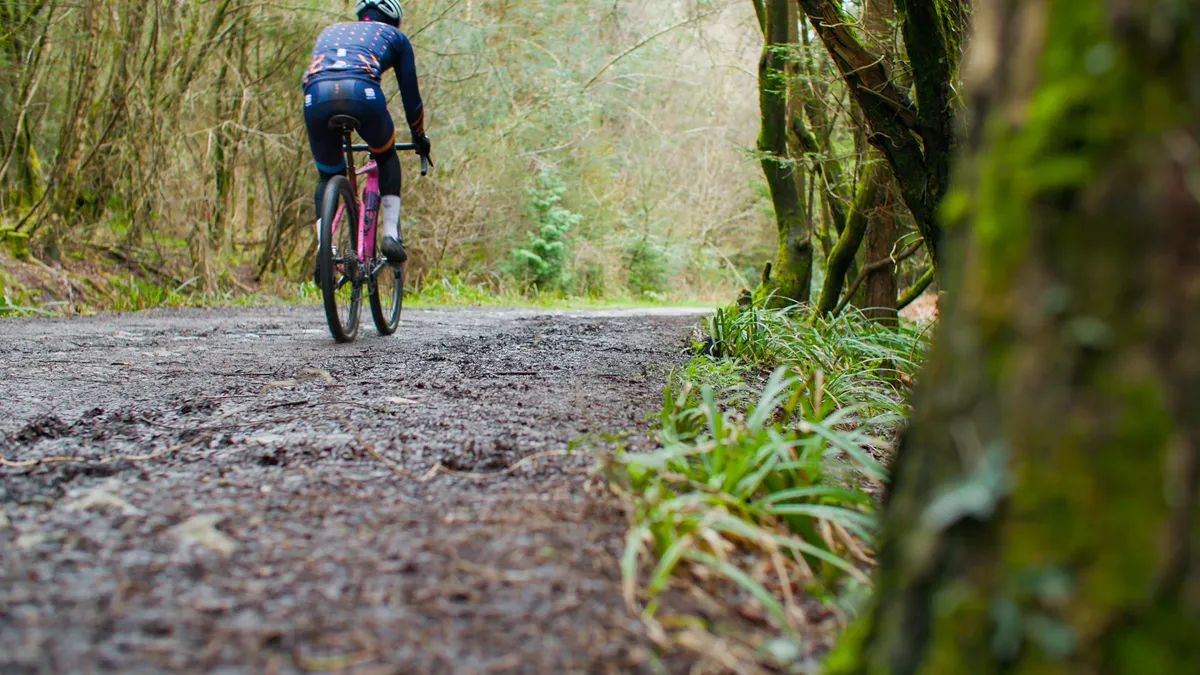
Once you've decided on 700c or 650b wheels, it's time to think about tyre choice.
Fitting the best gravel tyres for the riding you’re doing is another key decision for your gravel bike setup.
In fact, changing the tyres on a gravel bike from the stock build can unleash the true potential of your machine, either significantly improving its ability off-road or adding a turn of road speed.
With gravel bikes used across such a wide range of terrain, it’s one area where you can easily change how your bike performs. We’d recommend tubeless tyres for gravel riding.
Gravel tyre width
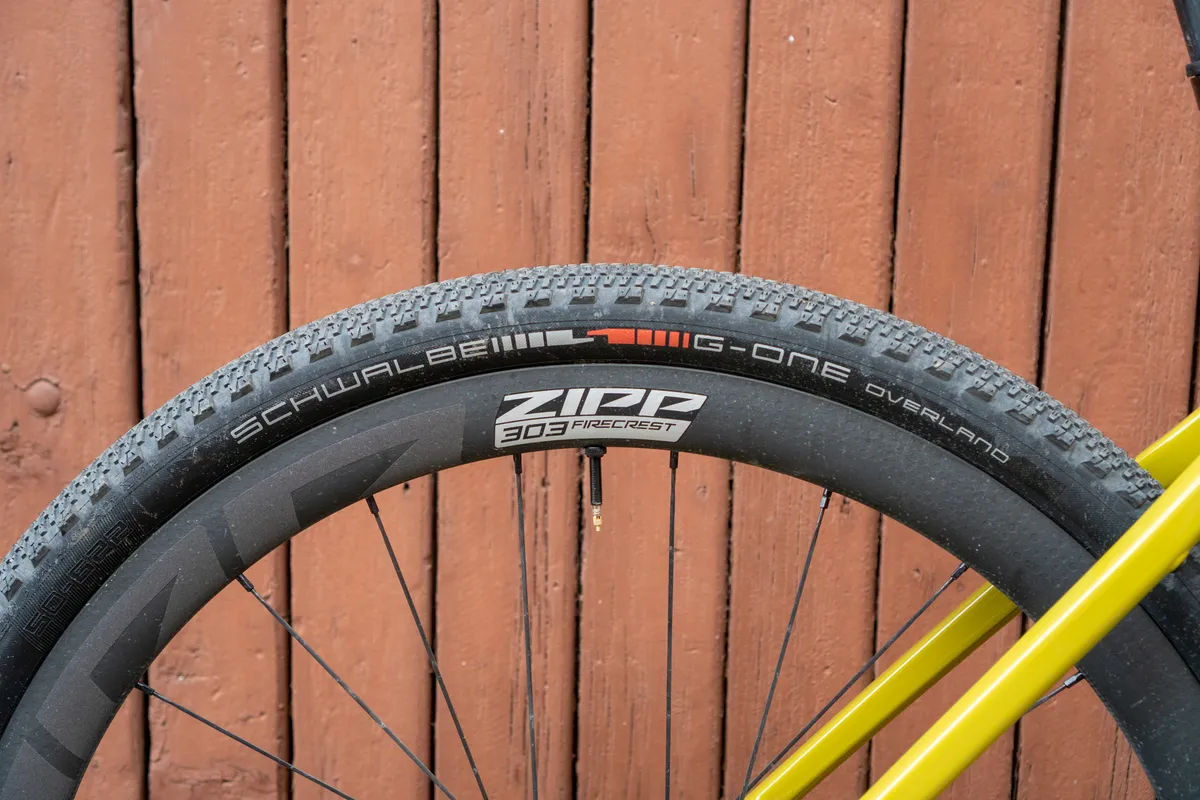
Having selected your wheels, tyre choice will largely be determined by tread pattern and width.
If off-road grip and stability are important, look for wider tyres with a more aggressive tread pattern; if you’re more likely to be riding on the road or dry, hardpack gravel, a narrower, slicker tyre will likely be more suitable.
Typical widths for 700c gravel tyres are 35mm, 40mm, 42mm and 45mm. But really wide gravel tyres are increasingly popular and bike brands are broadening frame clearances to fit them. For example, our 2023 Gravel Bike of the Year, the Giant Revolt X Advanced Pro 1, has room for 53c tyres.
How wide you go will depend largely on the terrain you ride and your frameset’s clearance. If you live somewhere with a wet climate, it’s a good idea to leave some room for mud too. Fitting gravel bike mudguards will also crimp clearance.
Gravel tyre tread pattern
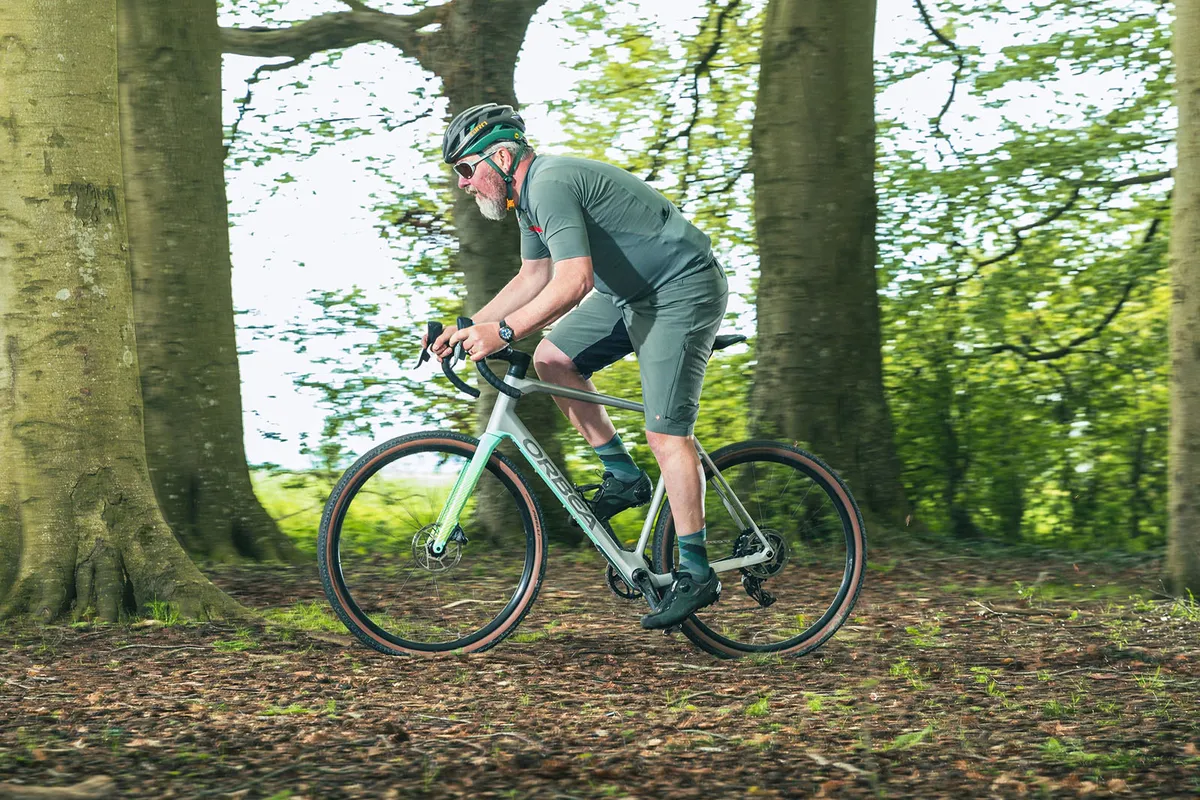
How muddy it is will also influence your tyre choice. In dry conditions and on finer gravel surfaces, you can usually get away with a file tread such as the Panaracer GravelKing SK or a semi-slick design, with a smooth centre, such as the WTB Byway.
The low-profile tread makes for fast rolling on tarmac, while there’s still enough grip from the side lugs to keep you upright and moving on looser surfaces.
If it’s wet or muddy, you’ll need something with more grip from a knobbly tread pattern. Schwalbe’s G-One range goes from the small knobs of the G-One Speed through to the G-One Ultrabite, while Continental offers the Terra Speed and Terra Trail for varying conditions.
There’s a whole range of gravel tyres from many manufacturers, designed for different terrain.

In wet or muddy conditions, large widely spaced knobs, as seen on cyclocross tyres, can improve grip and also help to shed mud. A tighter-packed tread won’t work as well in wet conditions, but will usually roll faster on tarmac or more hard-packed gravel surfaces.
If you’re running 650b tyres, again there’s a range of gravel options, with different tread patterns available.
650b gravel tyres are typically (but not always) focused on high-volume options, so you’re more likely to find tyres with more aggressive tread patterns and in large sizes. These tend to start out at 40mm and head up to 50mm wide or more.
27.5in mountain bike tyres are also an option and may offer a deeper tread for more grip. Confusingly, MTB tyre size is often designated in inches rather than millimetres. You’ll want to check you’ve got clearance in your frame for some of the wider options.
Gravel bike tyre pressure

Along with tread pattern and width, gravel bike tyre pressure is a big determinant of how your bike will handle.
The large air volume of wider tyres means you can drop your pressure, giving you better traction, potentially lower rolling resistance and a more comfortable ride.
Giving a rough starting point for tyre pressure is a tricky business because it’s so dependent on riding style, rider weight and terrain. However, as a guide, we would recommend around 40psi for a 40mm-wide 700c tyre, though you can usually drop below this.
With a wide 650b tyre – something in the 45mm+ range – 35psi is a good starting point. Check out an online tyre pressure calculator like this one from SRAM for a more precise guide, which takes many more factors into account.

It’s worth experimenting with tyre pressure to see what works for your tyre choice and where you ride. Too high and you’ll get bounced around and lose grip, while too low a pressure may result in sloppy handling and extra pedalling effort, as the tyre squirms on the rim.
Tyre pressure that’s too low may also result in you bottoming out on the rim, if you’re riding on uneven surfaces. If you’re using inner tubes that might result in a pinch flat, but with a tubeless tyre it’s less of a problem – though it’s still possible to pinch flat a tyre.
Experiment, take notes and think about investing in a digital tyre pressure gauge. This will make future fiddling far easier, more accurate and, critically, repeatable.
Tyre inserts are another option to up your protection and there are a few designed specifically for gravel riding, such as the Vittoria Air Liner Gravel. They enable you to run lower tyre pressures with less risk of bottoming out, tyre squirm or burping, where the tyre becomes disconnected from the rim and loses air.
Gravel bike finishing kit
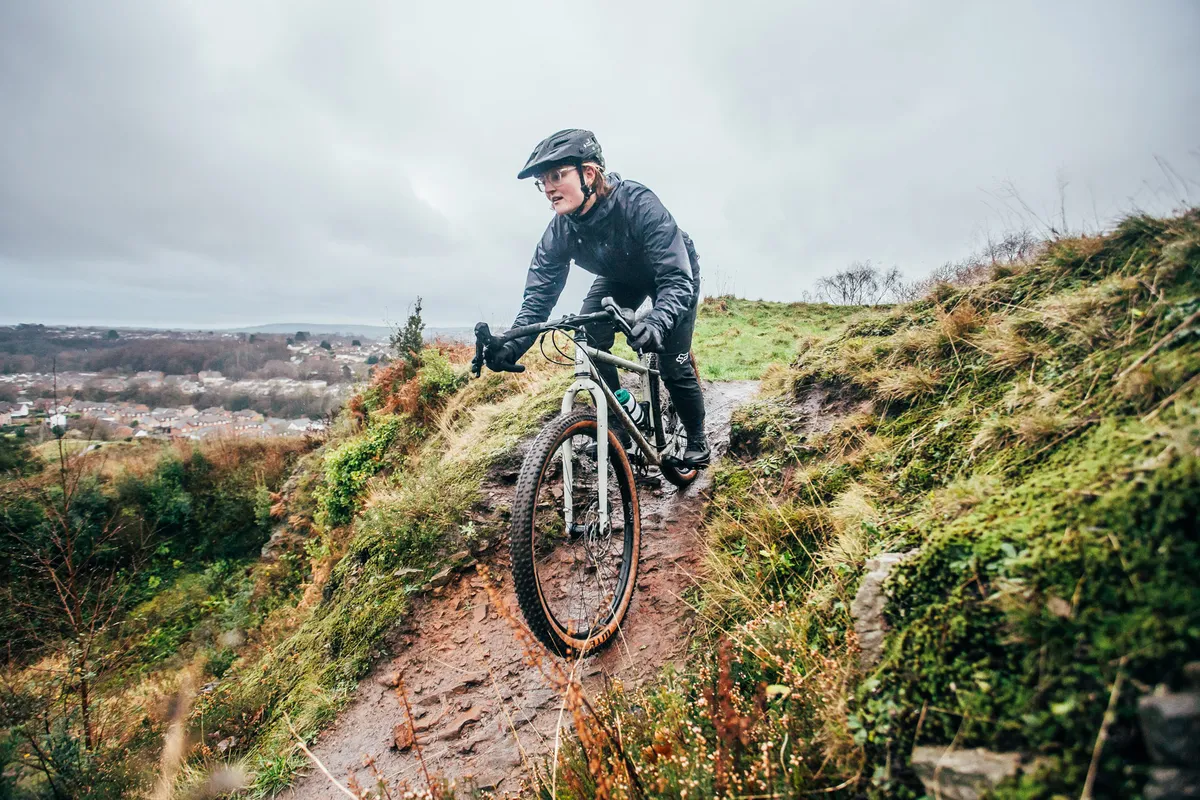
Some bikes come with flared gravel handlebars, which are wider in the drops than at the tops. That means you’ve got a bit more control when descending off-road, thanks to the wider position.
You also get a little more real estate between the levers for bikepacking bags on the front. Some flared bars cause the brake levers to sit at an angle, though; the ergonomics can feel a bit awkward with a very wide flare.

Another gravel bike development borrowed from mountain bikes is the trend towards running a shorter stem.
Whereas a road bike might have a 100mm stem or longer, on a gravel bike this might drop to 70 or 80mm. That again helps with steering on awkward trails, as well as reducing the effective reach to the bars.
You’ll want a comfortable saddle too. The way to choose the best saddle for you is entirely personal, though you should be mindful that what works for you on your road bike or mountain bike might not also work on a gravel bike, due to the altered body positioning.
Gravel bike dropper seatposts
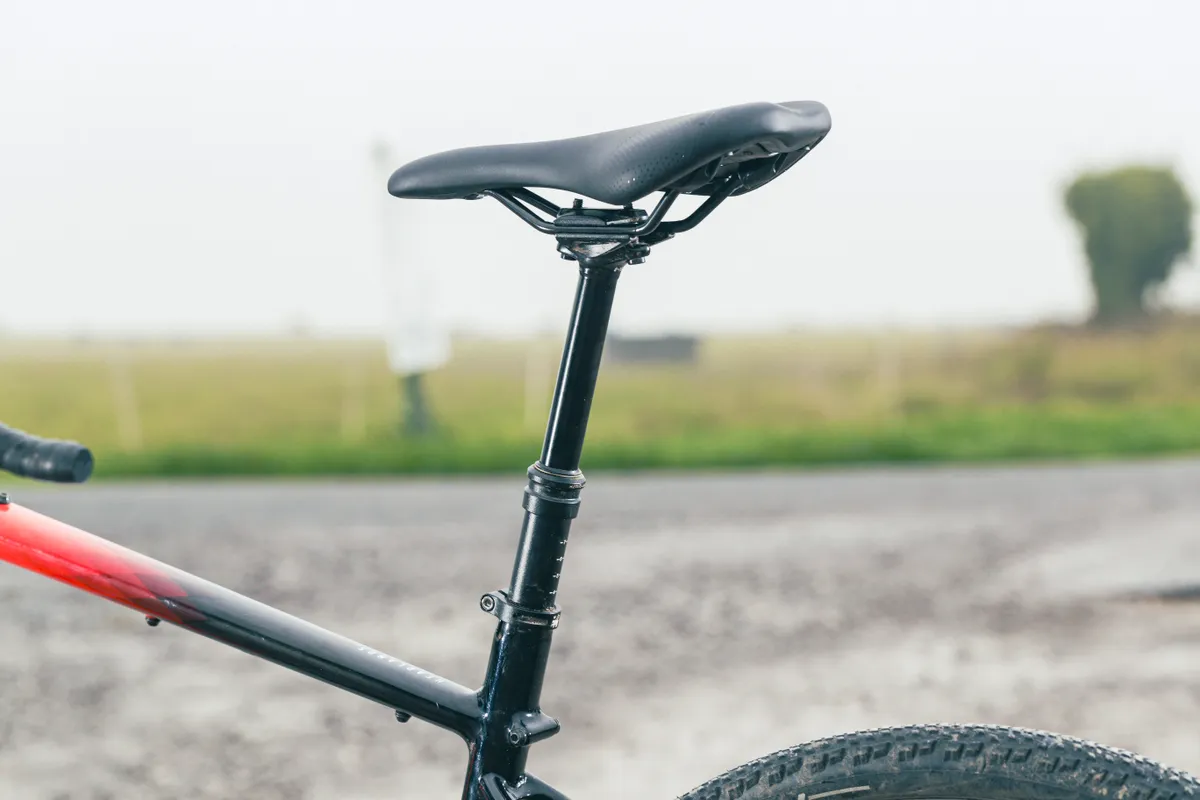
A growing number of bikes are specced with gravel dropper posts, albeit the number is still limited.
Some frames, however, will have ports to enable you to route the cable for an aftermarket dropper post internally, if you choose to upgrade.
A dropper post enables you to lower your saddle quickly, enabling you to shift your weight over the bike more effectively without having the saddle in the way on tricky descents.
However, it will add weight and complexity to your build, so is best saved for gravel bikes intended for use on properly technical terrain. Or there’s always a mountain bike.

Anyway, most gravel bikes have a 27.2mm seatpost and we've seen a number of dropper posts launched to fit that diameter.
A dropper post is usually controlled from the right shift lever. Shimano offers dropper post compatibility with its GRX ST-RX810-LA lever, so you can use a dropper from the shifter.
SRAM also offers dropper post compatibility with its Force, Rival and Apex 1x groupsets. The wireless Reverb AXS XPLR dropper (50 or 75mm travel) is designed for use with AXS wireless groups.
Gravel bike suspension
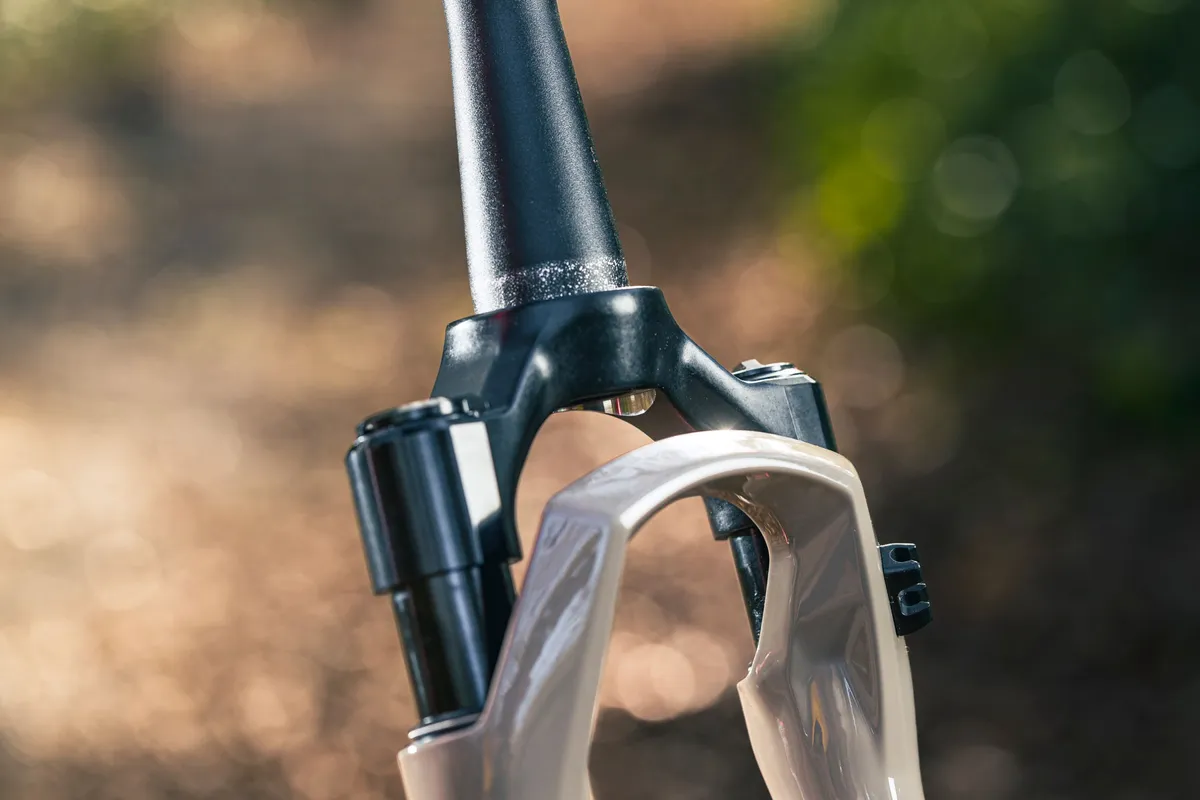
From in-built frame technology to gravel suspension forks, there’s a growing number of gravel bike suspension options on the market for smoothing out the rougher stuff.
If you’re looking to take some vibration out of your existing ride, adjustable suspension stems and seatposts are available from the likes of Cane Creek and Redshift.
Some bike brands are designing gravel bikes with in-built suspension, such as the Cannondale Topstone, which features Cannondale's proprietary Kingpin rear suspension for 30mm travel, as well as its Lefty fork.
The latest Specialized Diverge STR offers 30mm of rear-end travel alongside a Future Shock 2.0 headset.
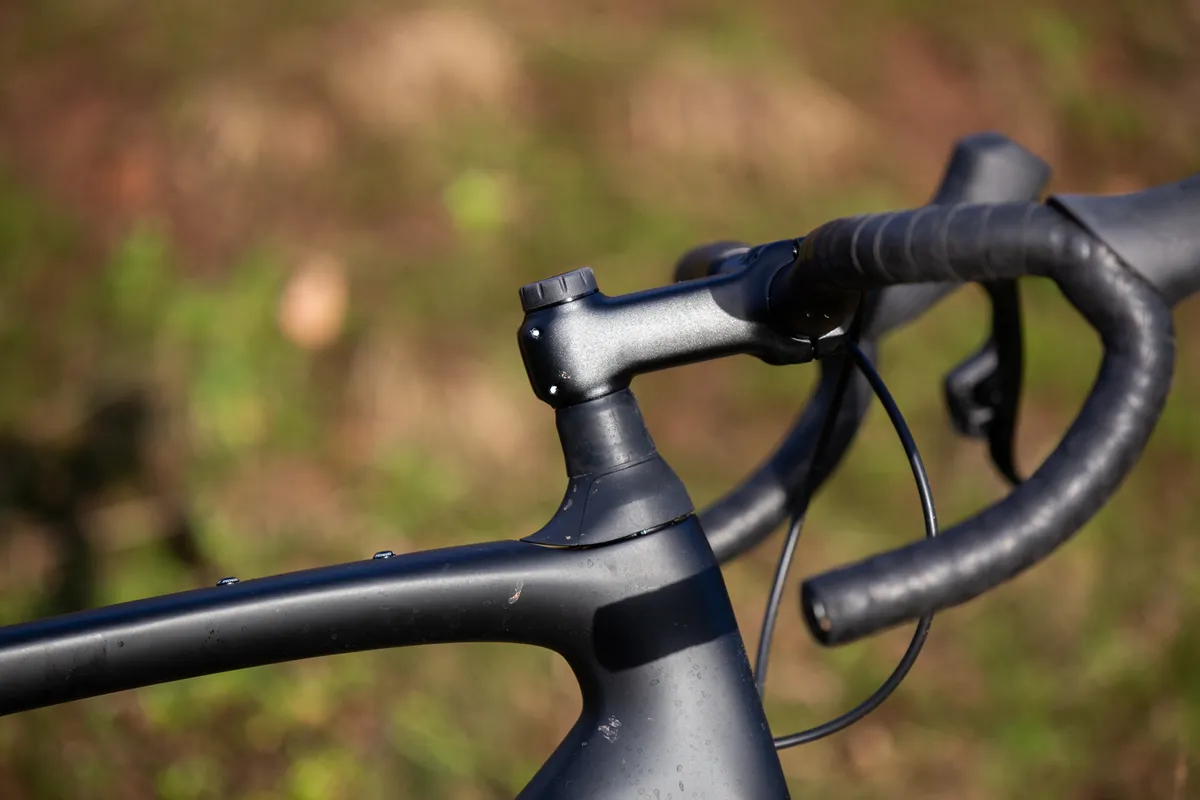
As for fully fledged gravel suspension forks, SRAM’s RockShox Rudy Ultimate XPLR features either 30 or 40mm travel, designed for 700c wheels. Gravel suspension forks are also available from brands including Lauf, Fox and SR Suntour.
Meanwhile, the wireless RockShox Reverb AXS dropper also doubles up as a suspension seatpost.
While all of these systems are undoubtedly effective at reducing trail feedback, experimenting with reducing your tyre pressures should be your first port of call when it comes to improving comfort on your ride.
Lights
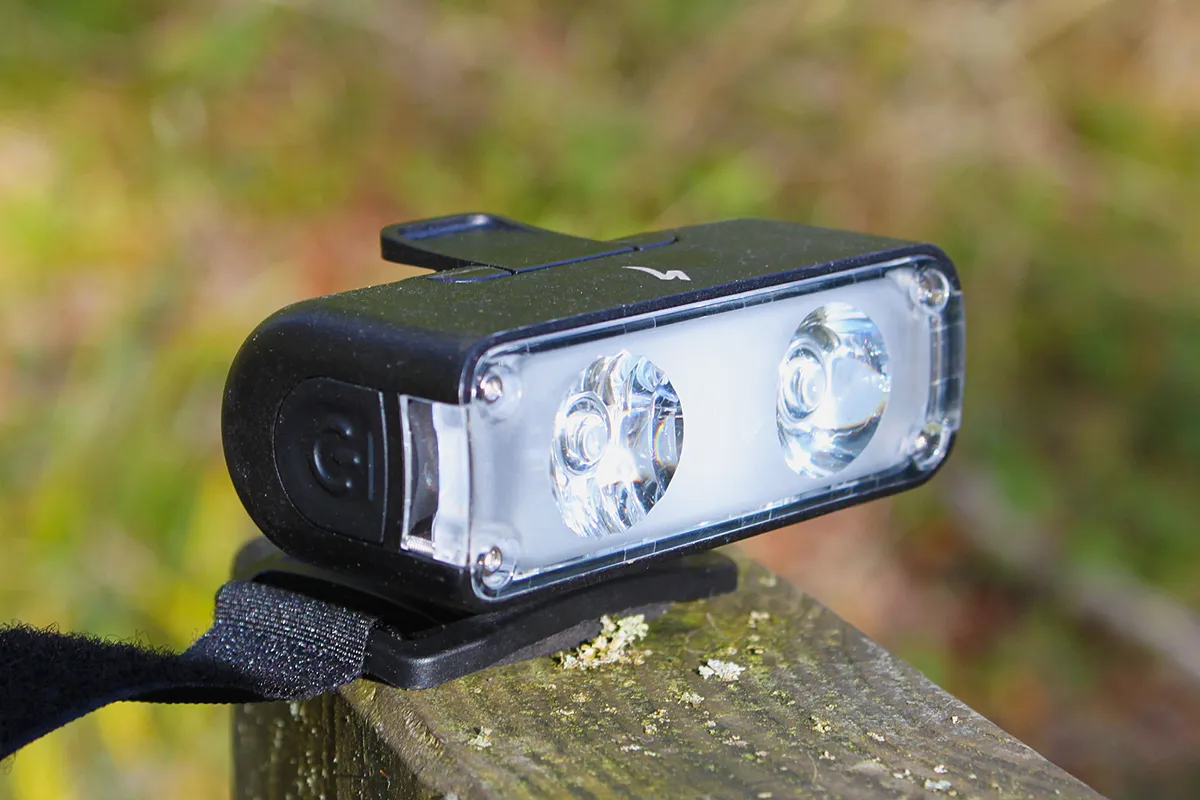
If you’re going for an extended trip on your gravel bike, or riding through winter, you may want to fit lights. There’s a huge range of different designs with varying light intensities and run times available, and what works for you will again depend on your riding.
For off-road rides in the dark, a high-intensity mountain bike front light with an output of 1,000 lumens or more will give you good illumination, perhaps coupled with a helmet light to help see around bends in the trail.
That might be overkill when riding on a road and could dazzle oncoming vehicles (the best road bike lights will help here), though the vast majority of lights will have multiple settings so you can dim output when required.
Think about battery life, too. Does the light you're using offer enough battery life for the setting you need to use it on and the length of your ride?
If you’re on a long ride and want to avoid running out of power, some lights are compatible with a separate power bank or a second battery for a quick recharge.

For unlimited power, you could fit a front wheel with a dynamo hub to keep your lights charged as you ride.
Some gravel bikes have routing for the cable from the dynamo through the leg, though you should choose your dynamo setup carefully, because not all dynamos are suitable for use at the lower speeds associated with off-road riding.
Navigation
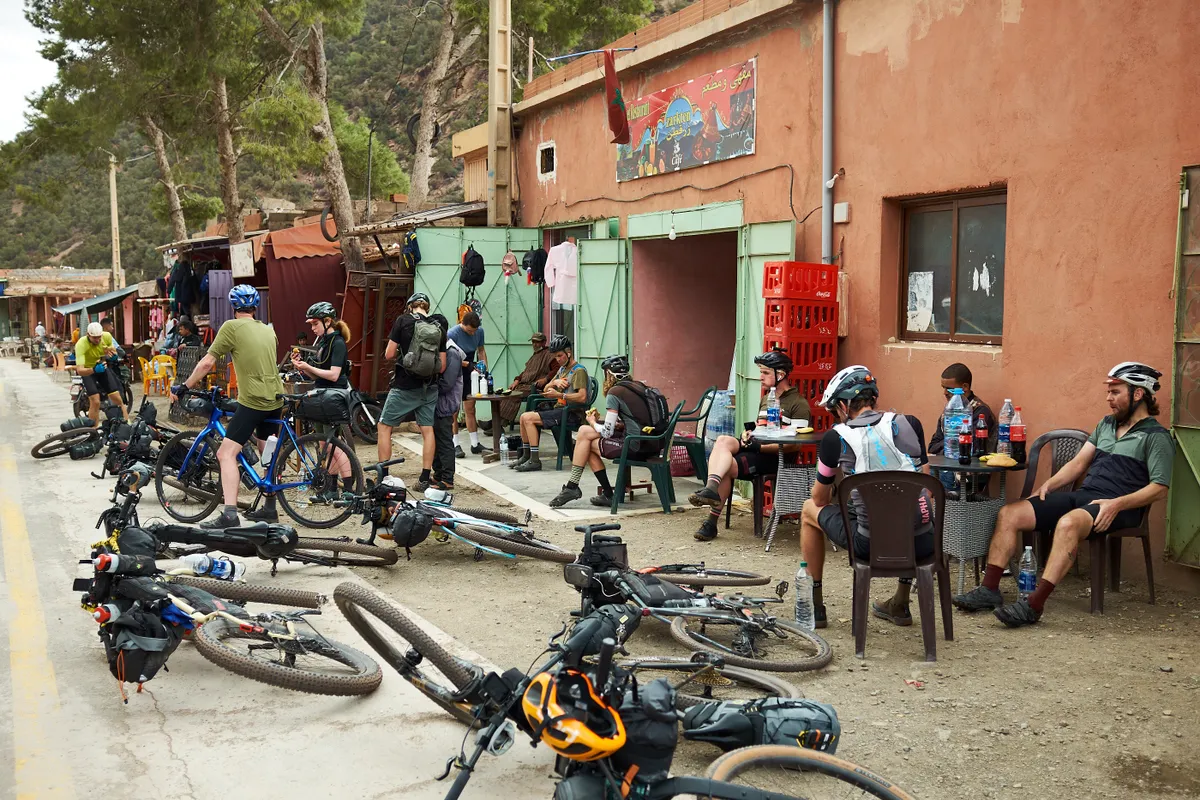
If you’re used to riding signposted roads, working out where you’re going on gravel tracks, forest roads, singletrack and trails may come as a bit of a shock. Even if you think you know where you’re heading, conditions on the ground may make it difficult to choose the correct path.
A GPS computer, or handlebar mount for your phone, is a useful accessory for gravel riders. Most of the best bike computers will have base maps that show some trails, although these are not always 100 per cent accurate. The more you spend on a computer, the bigger and more detailed the screen is likely to be – useful for navigating.
It’s worthwhile mapping out a planned route on software such as Komoot or Strava, uploading it to the GPS and following it if you’re unfamiliar with where you’re riding. That way, your computer can provide turn-by-turn directions or, if you do get lost, it should help guide you back to where you wanted to head.
If you’re going a long way or are on a multi-day bikepacking or touring trip, battery life might be an issue. As with your lights, you may want to carry a power bank or fit a dynamo hub to keep you charged up. A paper map is a good back-up to get you out of trouble.
Gravel bike luggage
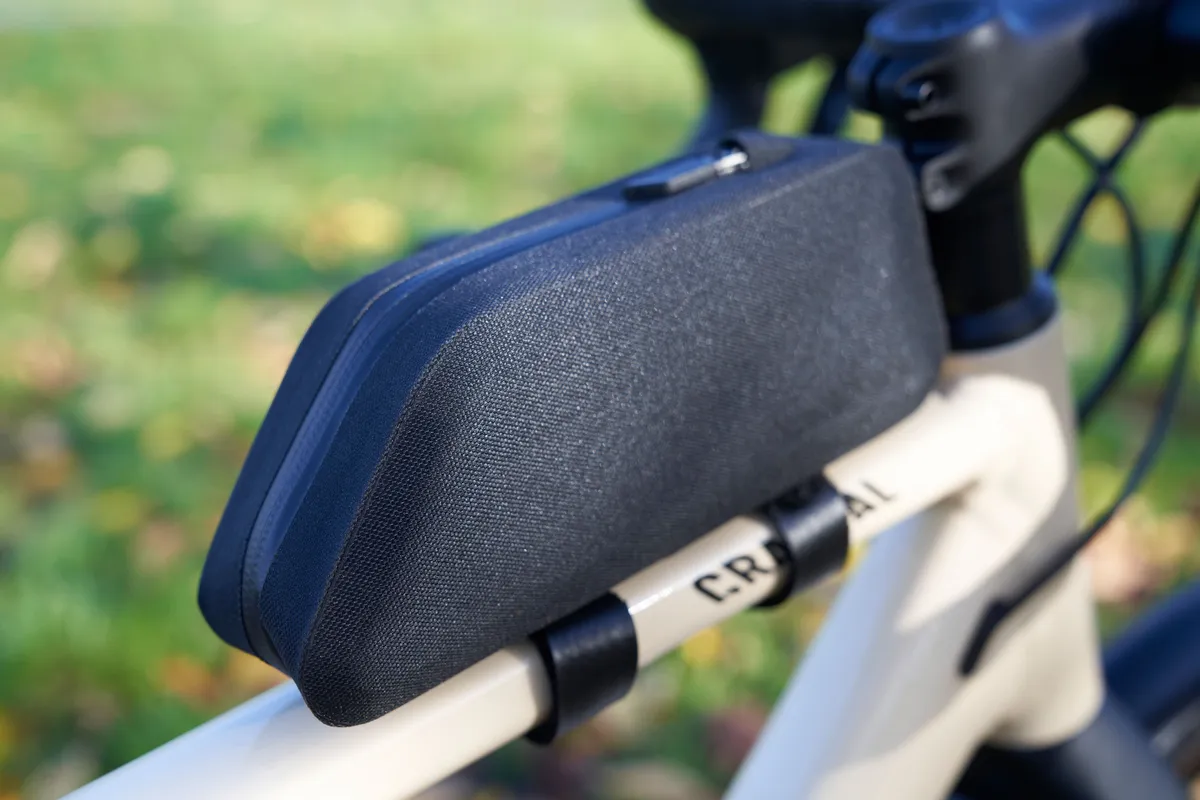
Another typical feature of gravel bikes is lots of mounting bolts on different parts of the frameset, enabling you to carry extra provisions, luggage and other gravel bike accessories.
You’ll usually get mudguard and rack mounts, although gravel bikes don’t tend to come fitted with either of these accessories as standard – they’re more likely to be found on commuting bikes and touring bikes.
Racier gravel bikes may not have mudguard mounts, so do check if that's important to you.

Many adventure-focused gravel bikes have a third water bottle cage on the underside of the down tube, upping your water-carrying capacity if you’re going off-grid, or enabling you to use a dedicated tool keg.
Some gravel bikes will come with extra mounting bolts on the fork legs and top tube too.
Rather than a traditional rack and panniers, most gravel riders will use bikepacking luggage if they’re planning a longer expedition. That usually starts with a saddle pack and may include a handlebar bag and frame packs too.
The bottom line

The great thing about a gravel bike is its versatility; you can use it for everything from rides that are mostly on the road with a few sections of loose surface thrown in, to full-blown multi-day off-road excursions.
Ultimately, the gravel bike that works for you will be decided by where on that riding spectrum you fall.
However, there’s enough adaptability, both in gravel frames and the range of components out there, that you can change your kit and adapt your gravel setup to different aims and conditions.
Expect to swap out tyres and possibly gearing for different terrain and seasons, and to fine-tune your spec over time to match your objectives.
To some extent, getting your setup right is down to getting out, riding and seeing what works for you – then, as you plan your next adventure, you can adapt your bike accordingly.
